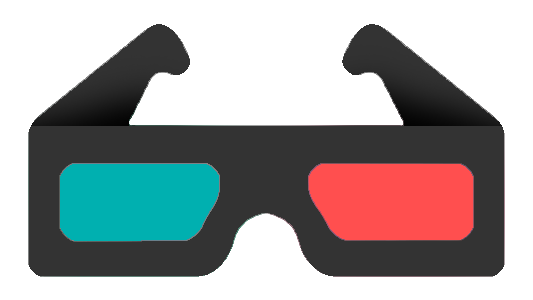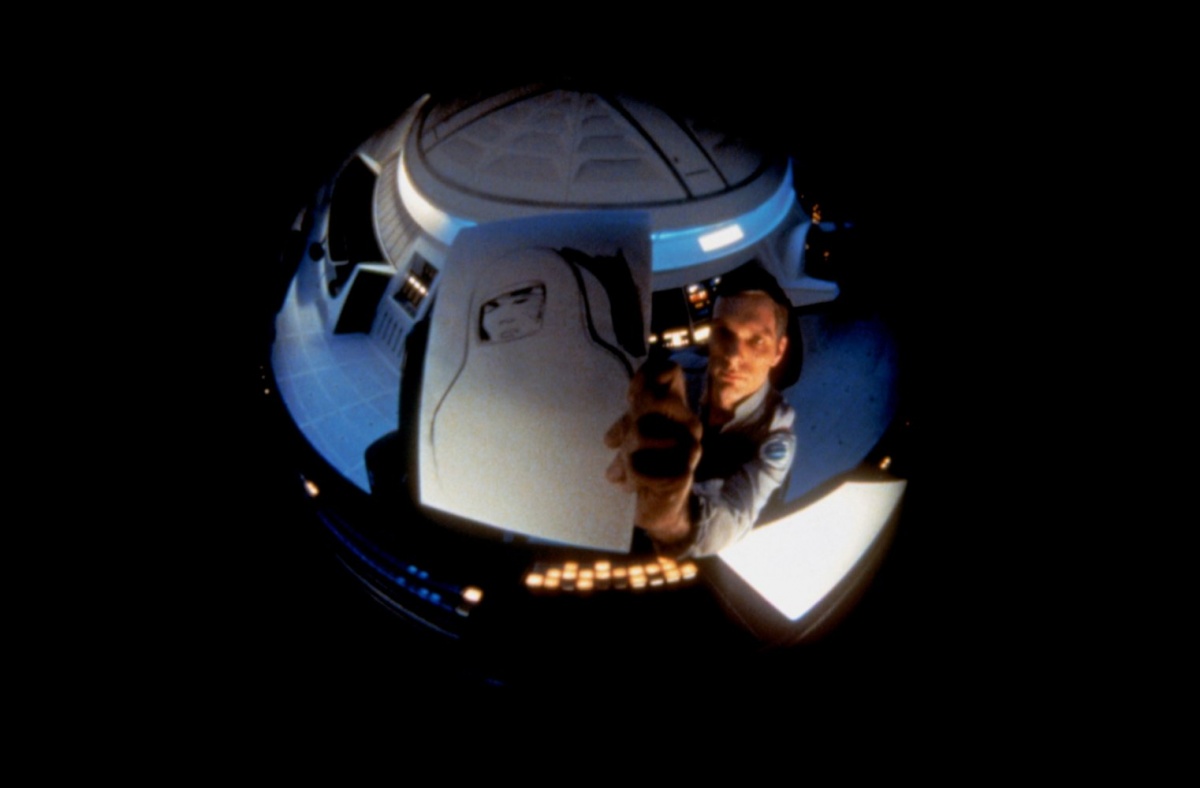2001: A Space Odyssey
| Year | 1968 |
|---|---|
| Country | UK, USA |
| Tagline | the time is now. [2001 rerelease] |
| Director | Stanley Kubrick |
| Cinematography | Geoffrey Unsworth |
| Scriptwriters | Arthur C. ClarkeStanley Kubrick |
| Produced | Stanley KubrickVictor Lyndon |
| Art Direction | Ernest ArcherHarry LangeAnthony Masters |
| Editing | Ray Lovejoy |
| Genres | FictionAdventure |
| USA Gross | $56 954 992сборы |
| Release Date | April 2, 1968 |
| MPAA | G |
| Runtime | 149 min. |
Plot Summary
Did You Know?
The film is based on the story by Arthur C. Clarke "Time", which was published in 1951. Clark developed the screenplay with Stanley Kubrick before the writing of the novel "2001: a Space Odyssey", published immediately after the movie.
It is known that during the filming of Kubrick consulted with NASA. And later in honor of the film NASA has named one of his space probe "Mars Odyssey 2001".
To simulate the lunar surface Kubrick imported, washed and repainted several tons of sand.
According to Isaac Asimov, Kubrick wanted to insure that if extraterrestrial civilization will be open until the premiere of the film. But a major London insurance company "Lloyd's" turned him down.
According to Douglas Trumbull, film for film material is almost 200 times higher than the duration left on the tape screen.
One of the scientific advisers of the film, Marvin Minsky, almost died on the set from falling from the scenery of a wrench.
Arthur C. Clarke said after the premiere: "If you have managed to fully understand the Odyssey, for us it is a failure, because we tried to give more questions than answers".
Initially, the voice of "HAL 9000" was planned female voice.
Some computers can see the sections of software code written in Fortran.
In the scene of the EVAs as the sound track was used the original recording of breathing of the cosmonaut Alexei Leonov, who was the first in history made an exit in outer space in 1965.
Frank Miller, who is voiced by the flight control, was a soldier of the US air force in real life and controlled real mission. It was approved for this role, because his voice was the most genuine, which the filmmakers could find. Inexperienced and nervous, he couldn't resist tapping a foot during a recording session, and then repeatedly came to record audio tracks, Stanley Kubrick folded the towel, put it under Miller's feet, and told him that now you can Bang plenty.
A rotating space station has offered specialist NASA Wernher von Braun.
Model space station with a diameter of 2.4 meters was Packed full of miniature incandescent bulbs in those days there was no fibre optic or led. Often had to stop shooting because the light radiated so much heat that threatened to melt the plastic design.
Lander Orion reached almost a meter in diameter and had retractable legs for landing. To create it specially went to the Grumman factory to see how the lunar module foot is exposed, and the nozzle blowing dust on landing. Just worked on the film 103 designer who actually were specialists of different professions: among them were architects, lithographic, sculptors, painters, welders and even bone carvers.
In his research Kubrick came across the Orion project, conducted by Freeman Dyson of Princeton Institute for advanced studies. These works have proposed the concept of ship nuclear engine. Later, these studies have closed, but then Kubrick was fascinated by the idea that bombs could propel us into space. He started again to change the design of discovery. But then common sense prevailed: first, the mention of nuclear bombs would be sent the viewer to the film Kubrick's "Dr. Strangelove or: How I learned to stop worrying and love the bomb" (1964), and secondly, a ship that would move intermittently with explosions, would have looked comical. Therefore, the alteration of the ship was canceled. But the name "Orion" is still in the film the so-called lander.
In those days not yet invented a system of traffic monitoring, so Kubrick had to invent her prototype, and to use multi exposure.
To show a space ship on the moon with some movement in his window a picture of the ship stuck on the glass and installed it in front of the camera, removing it against a well lit white background. That picture of the ship created a mask for the subsequent print in frame two different images (the mask is always possible to invert, creating a black background in place of white). The image in the wheelhouse of the ship was imprinted with rear projection.
The star field that we see outside the Windows of Orion, flying from Earth to the space station and "Aries" flying from the station to the moon, it was filmed using a metal sheet, painted black, which was manually drilled holes representing the stars, if the metal sheet to supply illumination. Moving sheet metal, Kubrick imitated the movement of these spacecraft. But here's the problem: all these holes that looked great on 35-millimeter film was too bright for 70-millimeter. And if they looked great on the 70-millimeter frame, it almost disappeared on 35mm. In the end, the star field was shot on 65 mm film with the help of animation technologies. There, on the easel for shooting animation photographed Jupiter, the Earth, the moon and all necessary for the film mask. The of the moon is real her photos. During the work on the film had taken three attempts to create models of the moon, and they all failed.
In 2011, the company Samsung in the trial with Apple appealed that the prototype of the iPad can be seen in this film.
If you replace each letter of HAL to the next in the English alphabet, you get IBM.
After the film's release in 1968, it was found that the compositions of Hungarian composer györgy Ligeti was used by the Director without the permission, what was the cause of long litigation between the composer, Stanley Kubrick and company "Metro-Goldwyn-Mayer".
In 1991, the tape was included in the national register of USA movies.
Shortly after the filming of the movie "Dr. Strangelove or: How I learned to stop worrying and love the bomb" (1963) Kubrick became interested in the question of life beyond Earth and decided to make "the proverbial good movie about science fiction", starting the search for a suitable co-author of the science fiction community. Roger Caras from Columbia Pictures told him of Arthur C. Clarke as a partner. And although Kubrick was convinced that Clark is "a hermit, an oddball who lives in a tree", he still sent the writer a telegram, to which Clark responded with their consent and a "horrible interest" (as he put it), and he did not understand why "Kubrick think I'm a hermit?". The first meeting Kubrick and Clarke took place on April 22, 1964 in new York.
For the position of art Director Kubrick invited Tezuka Osamu, being impressed by his series Astro boy, but was refused.
When Stanley Kubrick first met Arthur C. Clarke, he wanted to make a film about the relationship of man and the Universe, and Clark (as he put it) was intended "to create a work of art that will surprise, awe,... even, if appropriate, terror". Clarke offered Kubrick six of his short stories, and in may, Kubrick had chosen one of them "Time" as the basis for a future film. To collect more material and expand the story, he spent the rest of 1964 reading scientific papers on anthropology, watching fiction movies, and brainstorming sessions. Clarke and Kubrick for two years, the transformed "Time" in the novel, and then in the script for a film.
Astronomer Carl Sagan wrote in his book that Stanley Kubrick turned to him with the question of extraterrestrial life. Kubrick wanted to attract actors for the image of alien humanoids, however, Sagan was convinced that alien life forms are unlikely to resemble the earthly life, and such an image will add an element of hypocrisy in the film. Sagan suggested only to highlight the existence of extraterrestrial intelligence, but not to represent it. He had attended the premiere and was glad that was of some assistance. Kubrick hinted at the movie in the existence of invisible alien race, suggesting in an interview in 1968, that, after millions of years of evolution, these humanoid alien race become immortal machines, and then creatures of "pure energy and spirit".
Stanley Kubrick was very attentive to details: filming was made instructions for the use of various components of the spacecraft.
In its release, published 23 February 1965, Kubrick referred to the next film as a Journey across the stars. Clark recalled: "It was not later than eleven months since we started April 1965 Stanley came up with the name "2001: A Space Odyssey". As I recall, it was entirely his idea." Kubrick for the title was inspired by Homer's epics "the Odyssey": "This happened to us... what for the Greeks was a boundless sea, for our generation the same mystery Space".
Principal photography commenced on 29 December 1965 in Shepperton Studios (Shepperton, England). The Studio was chosen because it could accommodate a hole the size of 18×36×18 meters to the scene of the excavations in the crater Tycho. In January 1966, production was moved to MGM British Studio, where people were shooting on location and created special effects.
Shooting with the actors was completed in September 1967, and from June 1966 until March 1968 Kubrick was busy mostly with the development 205 special effects for the film. The film was completed, Kubrick in March 1968, shortly before the film's release in theaters.
According to Jan Harlan, while working on the movie, Kubrick listened to Anton Bruckner, Jean Sibelius and Gustav Holst.
Initially for writing the music for the film, Kubrick turned to composer Alex North, who did that for "Spartak". But in the end the Director decided to abandon this soundtrack in favor of the classics, what the North only found out after the premiere and was upset about it.
The game of chess, in which the astronaut plays the computer, plays party A. Resch V. Schlag, played at the tournament in Hamburg in 1910 (it was originally thought that it was invented by S. Kubrick, in his youth, playing chess on the iPod).
Deleted scenes "a Space Odyssey" is usually divided into two categories: scenes that were removed during installation, and the scene that Kubrick removed after the premiere.
Scenes on the cutting room floor: Scene, showing as live on the moon children of the colonists (the scene showed a classroom in which the lesson painting
Between the Kubrick film and book "2001: a Space Odyssey" Arthur C. Clarke there is a significant difference: in the book the third "monolith" is not in the orbit of Jupiter, and on the surface of yapet, moon of Saturn, where the expedition sent to "Discovery". At the time, the difference was explained by the fact that Kubrick couldn't find a realistic way to capture the rings of Saturn in the film, using the available technology of those times, so the scene of the story was decided to move to Jupiter.
The first word is pronounced only 25 minutes of the film.
The scenes cut after the premiere: In the prologue of "The Dawn of Man" had a few extra shots that reveal more changes in the behavior of monkeys after exposure to the Monolith







